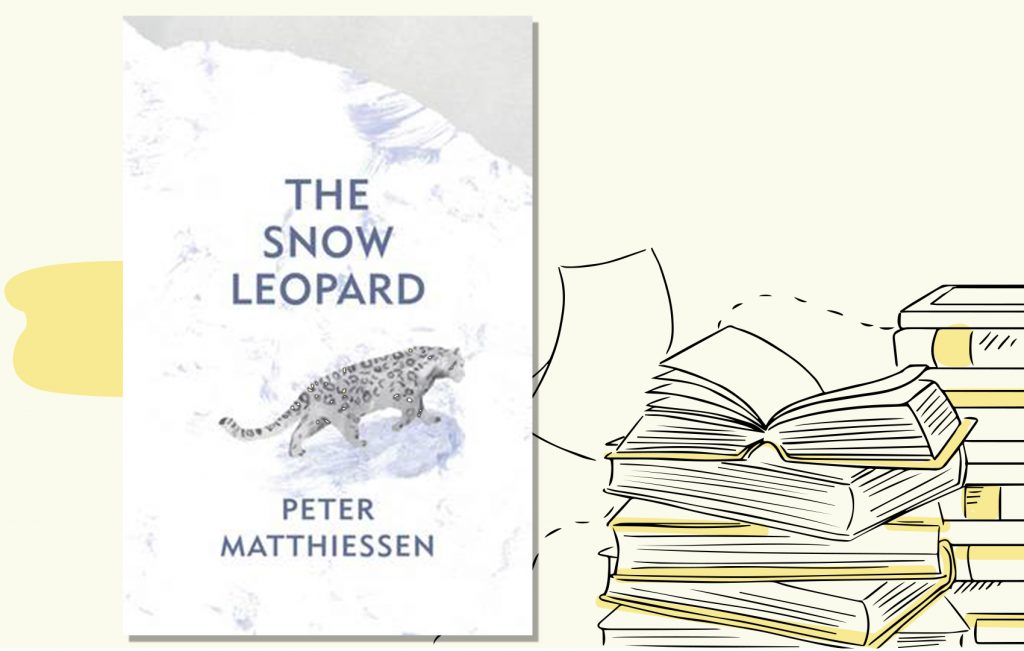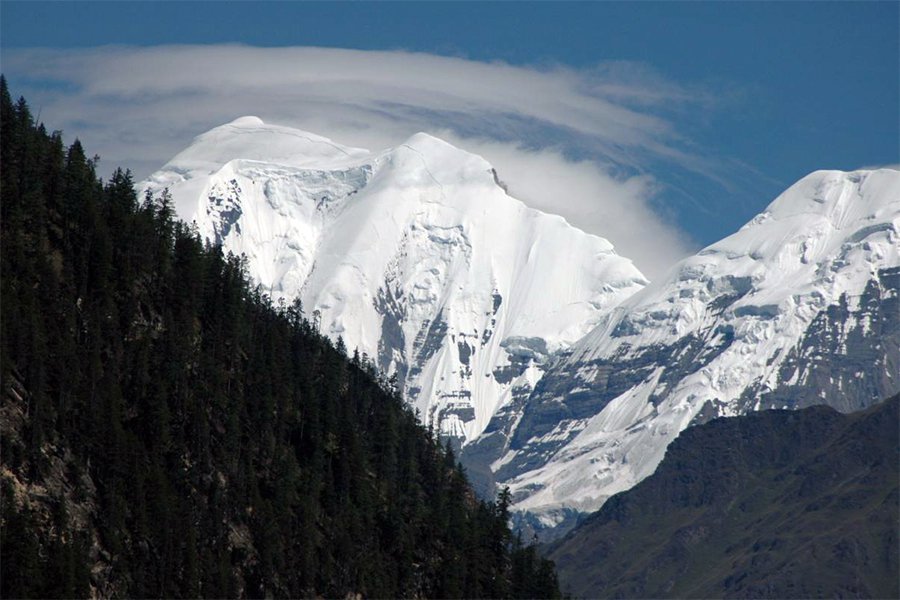
The Snow Leopard is an enthralling account of Peter Matthiessen‘s journey through the remote mountains of Nepal in pursuit of the elusive and mysterious snow leopard. The 1978 publication is now considered a classic of travel literature and one of the most vibrant depictions of Nepal ever written.
The book accounts how Matthiessen and his naturalist friend, George Schaller, embark on a journey to Dolpo to study the Himalayan blue sheep and, with great luck, capture a glimpse of a snow leopard. Matthiessen’s trek through the Himalayas is not only a physical voyage, but also one of self-discovery and introspection.
Throughout the book, Matthiessen contemplates his past and the people he has lost, as well as the meaning and purpose of life and existence. He also meditates on the Buddhist concept of emptiness, which he considers the key to comprehending the true nature of reality.
Poetic words, powerful themes
The Snow Leopard is frequently compared to Zen and the Art of Motorcycle Maintenance by Robert M Pirsig. Each examines the relationship between humans, nature, and spirituality while using a personal voyage to facilitate the writer’s philosophical reflection. But the book focuses more on the natural world and the Buddhist concept of emptiness whereas Zen and the Art of Motorcycle Maintenance emphasises the philosophy of quality.

Matthiessen’s evocative and thorough descriptions of the natural world are one of the most remarkable aspects of the book. The prose is poetic, and his depiction of the Himalayan landscape with its snow-capped peaks, alpine meadows, and rugged topography is breathtaking. His eloquent descriptions paint such a picture that readers can almost feel the excitement of spotting a Himalayan blue sheep or a snow leopard in the wild.
In The Snow Leopard, Matthiessen also provides insights into the culture and mannerisms of the people in Dolpo throughout the book. It is one of the most striking aspects of Matthiessen’s writing as he talks about the individuals he meets on his voyage. His portrayal of the Sherpas is nuanced but respectful as he describes their courage and fortitude in the face of the severe mountain environment, as well as their intelligence and generosity.
Further, he describes their customs, beliefs, and practices and offers a riveting glimpse into a world that is radically different from others. In some ways, he also criticises the way in which modernity is eroding spirituality and the feeling of community essential to the Nepali people. Contemplating, he also describes the influence of modernisation on traditional methods of life and the underlying conflict between preserving tradition and embracing progress.
The notion of impermanence–of life, of existence and of mortality–is another powerful theme in The Snow Leopard.
The majesty, spirituality, complexity
Matthiessen’s writing as he travels through the mountains in quest of something is infused with introspection and self-reflection. He writes about his struggles with grief and loss, and how his voyage through Nepal helps him accept these emotions throughout.

The Snow Leopard is a testament to the ability of nature to inspire, heal and transform, as well as a reminder that there is much to gain from slowing down, connecting with the natural world and contemplating the meaning of life.
As Matthiessen talks about how his wife died of cancer shortly before he set out on his voyage, the themes become especially poignant. His reflections on loss and grief are visceral and sincere, giving the book a profoundly personal dimension.
Matthiessen’s writings about Nepal are also characterised by a reverence for the place’s spirituality. His descriptions of the rituals and beliefs of the people he encounters are respectful and illuminating. As he spends time in monasteries and with holy men, he discusses the Buddhist concept of “emptiness” and how it manifests itself in the art and architecture of Nepal.
Nepal possesses awe-inspiring natural grandeur, and Matthiessen’s writing magnificently captures this. His descriptions of the towering Himalayan summits, rugged valleys, and swift rivers are vivid and poetic. His portrayal of the Sherpa guides who accompanied him on his voyage is particularly insightful. He writes with a profound respect for the people who inhabit these harsh and remote regions.
Timeless and universal value
The Snow Leopard by Peter Matthiessen captures the majesty, spirituality, and complexity of Nepal. It is essential reading for anyone interested in travel literature, spirituality, and the splendour of nature.
While The Snow Leopard is a memoir, it is not a traditional travelogue, and some readers may be disappointed if they anticipate a straightforward account of Matthiessen’s travels.
Having said that, some readers may find the book to be slow-paced or excessively philosophical. Readers unfamiliar with Buddhism and the concept of emptiness may also find Matthiessen’s reflections on these concepts quite a stretch.
Overall, The Snow Leopard is a beautifully written and thought-provoking book that examines some of humanity’s most fundamental issues.
























